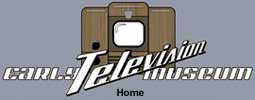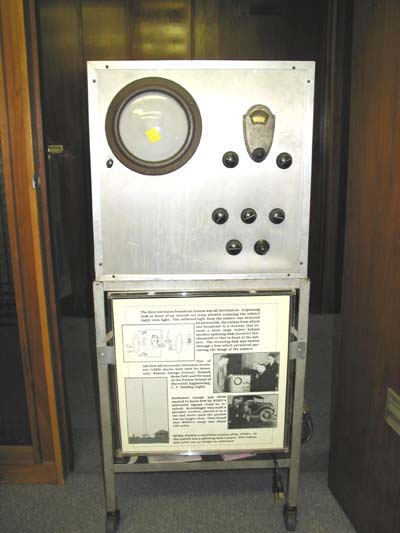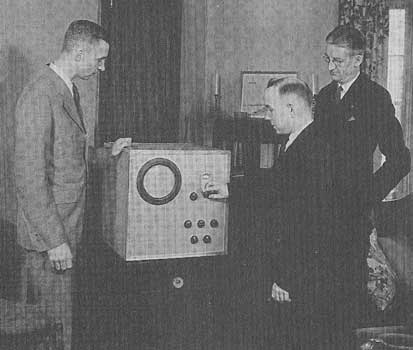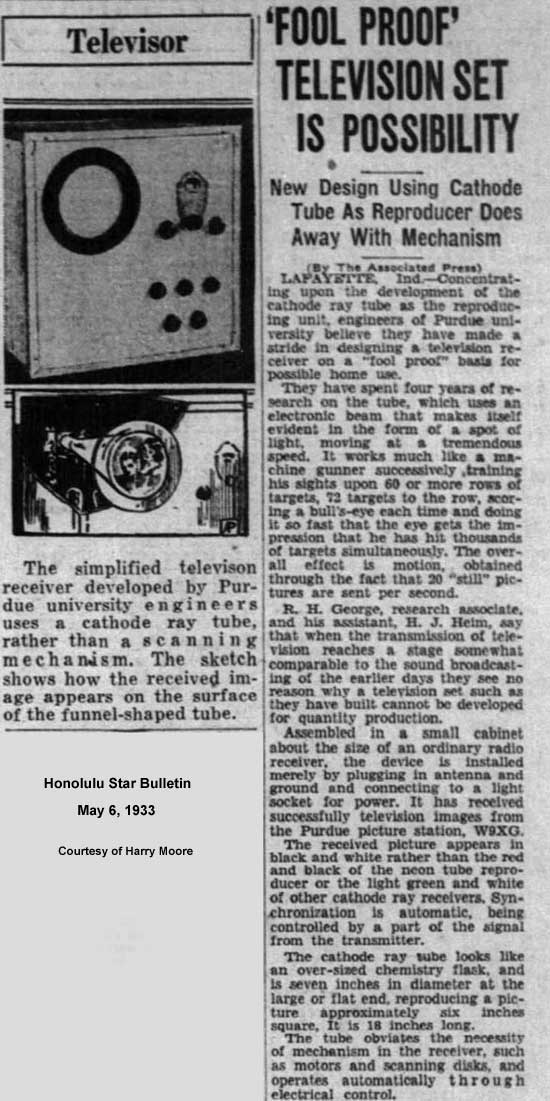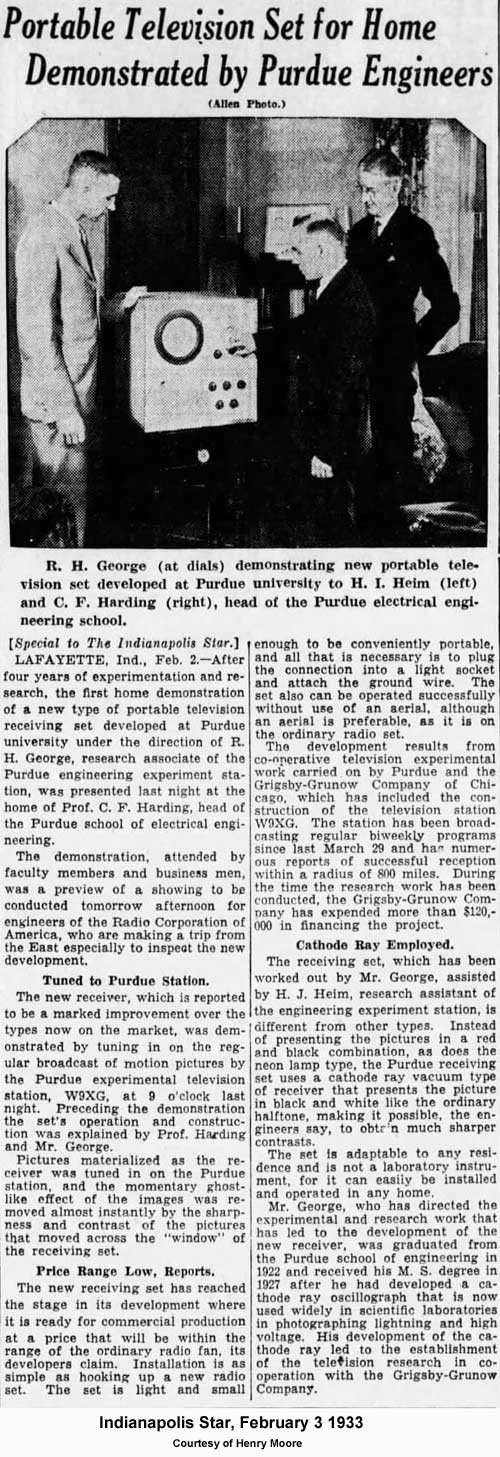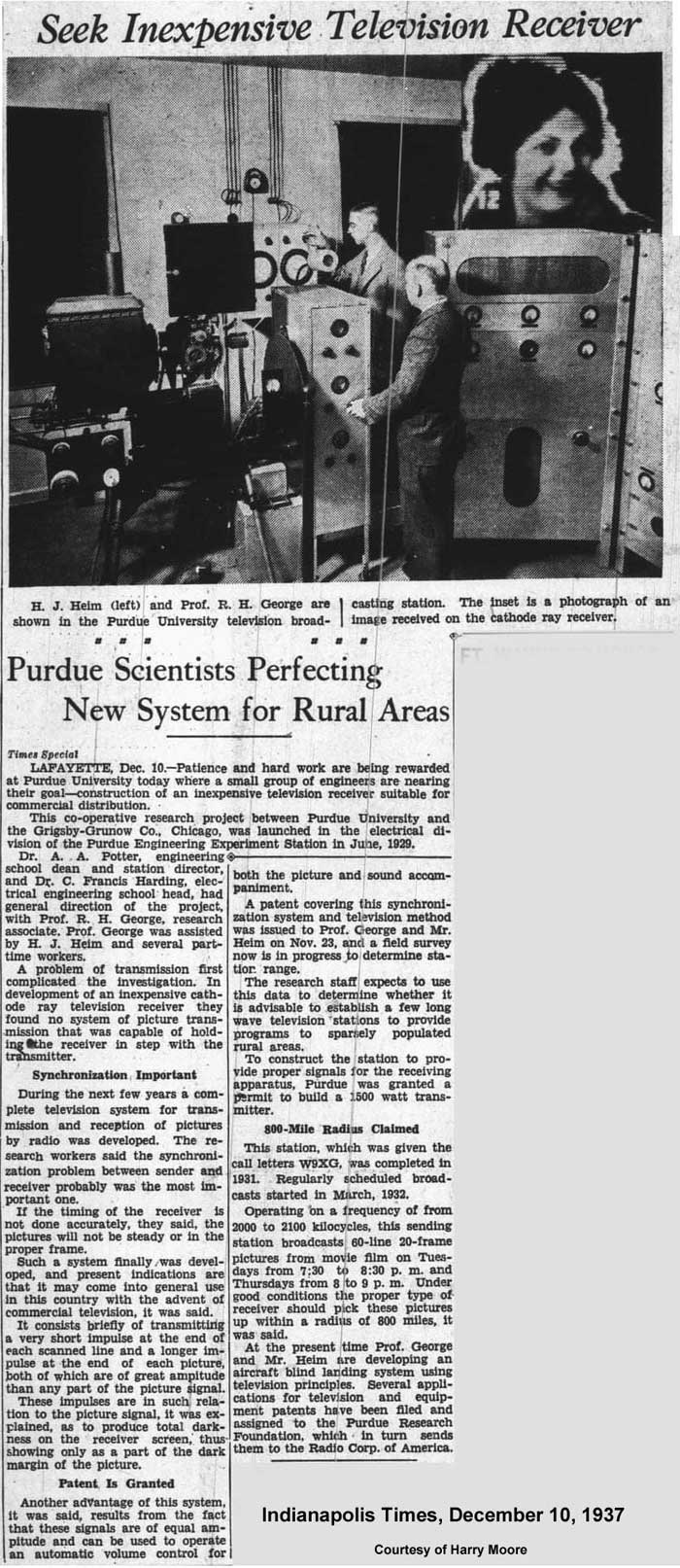Early Electronic Television Purdue University Experimental Set
This set was built by the Electrical Engineering department at Purdue University. It was made in 1932 for reception of 60 line mechanical transmissions from the University's station W9XG. The Purdue engineers were probably the first to add synchronizing pulses to their transmissions, short ones at the beginning of each line, and long ones at the start of each frame. These pulses were added to the video information at a signal level higher than the level of black (called "blacker than black"), and could be extracted by the electronic receiver. The 1932 Purdue set is among the first electronic TV receivers. The book A Century of Progress: The History of Electrical Engineering at Purdue (1888-1988) has a chapter about television. Here is a description of the set:
Roscoe George, who built the set, in a picture taken in the early 30s.
This article describes the system that Purdue developed for picture synchronization. A similar method became the standard for television broadcasting. |
